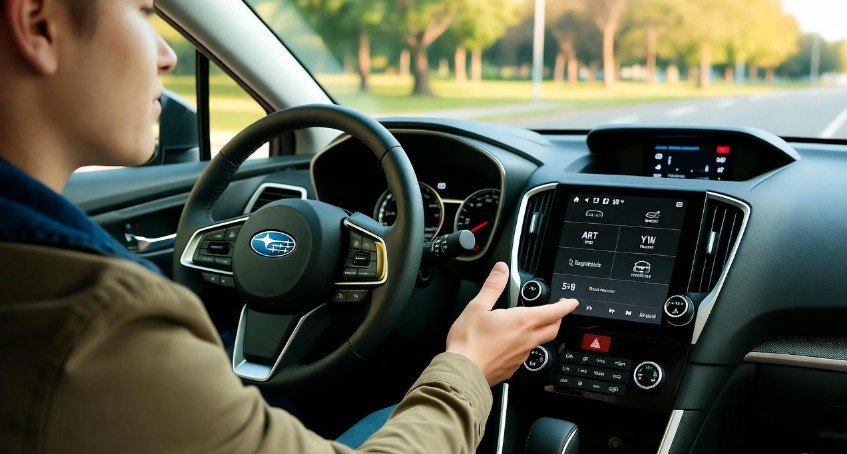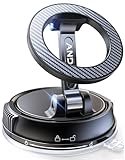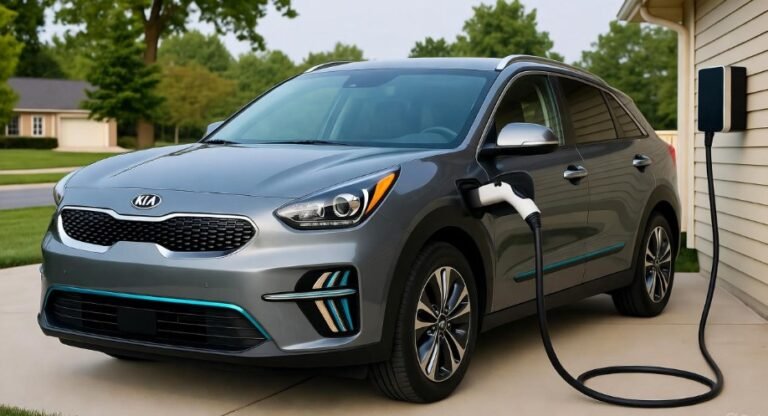How to Turn off Lane Departure Warning Subaru: A Complete Guide for Everyday Drivers

If you drive a Subaru, you probably already know how much this brand values safety and technology. Subaru’s EyeSight Driver Assist Technology is one of the most recognized safety systems in the automotive world. Among its advanced tools, the Lane Departure Warning (LDW) system stands out as a guardian angel that alerts you when your car drifts outside its lane.
But here’s the thing—while Lane Departure Warning is undeniably useful, it can sometimes feel overly sensitive or distracting, especially on narrow roads, snowy conditions, or rural highways. Many Subaru owners have wondered how to turn off Lane Departure Warning when it becomes more of an interruption than assistance.
This complete guide will walk you through everything you need to know—from understanding what LDW really does to the step-by-step process of turning it off safely. I’ll also share personal insights and practical tips that come from real-world driving experiences with Subaru vehicles.
What Is Lane Departure Warning and Why Subaru Added It
Before you turn off any feature, it’s good to understand what it actually does. Lane Departure Warning (LDW) is a safety feature that uses cameras and sensors to monitor your lane position. If your Subaru detects that you’re drifting over the lane markings without using a turn signal, it alerts you—often with a beeping sound, visual icon, or steering wheel vibration.
This system is part of Subaru’s EyeSight suite, which also includes features like:
-
Adaptive Cruise Control
-
Pre-Collision Braking
-
Lane Keep Assist
-
Lead Vehicle Start Alert
In simple words, LDW is like a friend sitting beside you, gently nudging you back when you start to wander. However, just like any helpful friend, sometimes it can become a bit too vocal—especially when the road markings are unclear or you’re intentionally steering around potholes.
That’s when knowing how to disable Lane Departure Warning can make your drive more peaceful and comfortable, without compromising your control or safety.
Why Some Drivers Prefer Turning It Off
You might wonder, “Why would anyone want to disable a safety feature?” The answer lies in driving context and personal preference. Subaru designed LDW to enhance awareness, but not every road or driving condition plays well with its alerts.
Here are a few common reasons why drivers choose to turn off the Lane Departure Warning system:
-
Rural or Narrow Roads: On country roads where lane markings fade, LDW might trigger constant alerts.
-
Snow or Rain: Poor visibility and road conditions can cause false detections.
-
Towing or Heavy Loads: Some drivers report inaccurate warnings when carrying trailers.
-
Personal Comfort: Some prefer fewer beeps and alerts during relaxed driving.
I remember driving a friend’s Subaru Outback through a winding mountain road in Vermont. The LDW kept chiming every few minutes because the lane markings were barely visible. It didn’t take long before the constant alerts became more stressful than helpful. That’s when I realized—turning it off temporarily can actually improve concentration in certain conditions.
So, while the feature is great for long highway drives, knowing how to manage it gives you freedom and flexibility behind the wheel.
Step 1: Locate the Settings Menu on Your Subaru Display
The first step in learning how to turn off Lane Departure Warning Subaru is accessing your car’s main menu. Most Subaru models from 2015 onwards have a central infotainment system that lets you manage all safety and driver-assistance features.
To begin:
-
Start your vehicle and make sure it’s in “Park.”
-
Locate the “Home” or “Menu” button on your touchscreen display or dashboard controls.
-
Tap “Settings” or use the control knob if your model doesn’t have a touchscreen.
In newer Subarus like the Forester, Outback, or Crosstrek, the menus are very intuitive. You’ll typically see categories such as General, Vehicle, and Safety/Driver Assistance. Your goal is to get to the Safety or Driver Assistance settings, where Lane Departure Warning is listed.
A small note here—different models may label the feature slightly differently. Some might call it “Lane Departure Warning”, others might group it under “EyeSight Settings.” Either way, it’s the same system controlling those lane alerts you hear on the road.
Step 2: Navigate to Safety and Driver Assistance Settings
Once inside the menu, look for the section titled “Driver Assistance” or “Safety Settings.” This is where Subaru bundles all the safety features, including Lane Departure Warning, Pre-Collision Braking, and Lane Keep Assist.
Here’s what you might typically see on your screen:
| Feature | Description | Status |
|---|---|---|
| Lane Departure Warning | Alerts when drifting out of lane | ON |
| Lane Keep Assist | Provides steering correction | ON |
| Pre-Collision Braking | Helps prevent frontal collisions | ON |
| Lead Vehicle Start Alert | Warns when the car in front moves | ON |
From this list, select Lane Departure Warning. You may need to scroll slightly to find it, depending on your model year.
At this stage, Subaru gives you flexibility. Some models allow you to adjust the sensitivity rather than turning the feature off entirely. You might see options like:
-
High Sensitivity
-
Normal
-
Off
If you’re looking to completely disable it, choose Off and confirm the action.
Step 3: Disable the Lane Departure Warning Feature
Once you’ve selected the Lane Departure Warning setting, you’ll have the option to toggle it on or off. Press the button or select the “Off” option on your touchscreen. Your Subaru will likely ask for confirmation—just tap “Yes” or “Confirm.”
That’s it! You’ve successfully turned off the system.
But remember, the feature may automatically turn back on when you restart the car in some Subaru models. That’s because Subaru prioritizes safety and wants to ensure these systems are active unless you manually disable them every time.
A good tip is to check the dashboard icon after turning it off. The LDW indicator should no longer light up when you drift slightly within your lane. If it’s still showing or you hear alerts, revisit the settings and make sure the change was saved.
I’ve noticed that in newer Subarus like the 2022 Outback, the system is smart enough to remember your preferences between drives—but older models might reset automatically. Always keep an eye out during your next trip to confirm.
Step 4: Test the System to Ensure It’s Off
After turning off the feature, it’s time to make sure the change worked. Take your Subaru for a short drive in a safe, low-traffic area. Try slightly crossing the lane marking without signaling.
If no alert sounds or dashboard warning appears, then congratulations—the Lane Departure Warning system is officially off.
If you still receive alerts, there’s a chance you only disabled Lane Keep Assist and not Lane Departure Warning (they’re closely related but separate features). Recheck your menu and ensure both are adjusted according to your preference.
This small test ensures that your settings are effective and that you fully understand the impact of disabling the system. Safety technology can vary between Subaru models, so hands-on verification is always smart.
Step 5: Know When to Keep It On
It’s essential to mention that while you can turn off Lane Departure Warning, there are situations where keeping it on is beneficial.
Here are a few examples:
-
Long Highway Drives: The system can help prevent fatigue-related drifting.
-
Night Driving: LDW assists in maintaining awareness during low visibility.
-
New Drivers: Those still gaining experience can benefit from early alerts.
-
Unfamiliar Routes: When driving in unknown territories, it offers an added layer of confidence.
As a long-time Subaru driver, I’ve found that using LDW selectively offers the best balance. When I’m on winding countryside roads, I turn it off. But when traveling interstate for hours, I always turn it back on—it’s like having a co-pilot who never blinks.
Important Considerations Before Turning It Off
Before you decide to keep the system permanently disabled, think about the broader picture. Subaru’s safety design philosophy revolves around preventing accidents before they happen. By disabling LDW, you’re taking on full responsibility for lane control and awareness.
Here are a few considerations:
-
Legal Implications: In some regions, certain safety systems must remain active by law.
-
Weather and Visibility: Fog, rain, and night conditions increase the risk of lane drifting.
-
Fatigue Factor: LDW can catch moments of inattention you might not even realize.
-
Resale Value: Keeping all features active may help maintain the car’s resale appeal.
It’s not about whether you should disable it, but when it makes sense to do so. Always prioritize your safety and the conditions you’re driving in.
How Model Differences Affect Lane Departure Warning Controls
One thing Subaru drivers often overlook is that the process to turn off Lane Departure Warning can vary depending on the model and year. For instance, a 2020 Subaru Outback may have a slightly different menu layout compared to a 2017 Subaru Forester. Older models often use physical buttons near the steering wheel or dashboard, while newer ones rely heavily on touchscreen interfaces.
Here are some common model-specific variations:
| Subaru Model | Typical LDW Control Location | Notes |
|---|---|---|
| Outback 2020+ | Touchscreen > Settings > Driver Assist | Allows temporary or permanent off |
| Forester 2018-2022 | Infotainment Menu > Safety | Some models reset after ignition off |
| Crosstrek 2019+ | Driver Assist Menu | Can adjust sensitivity instead of complete off |
| Legacy 2017+ | Physical buttons + Menu | LDW may be linked with Lane Keep Assist |
If your Subaru isn’t listed above, the owner’s manual is your best friend. It provides exact instructions and can save you time, preventing accidental changes to other safety systems.
Tips for Using Lane Departure Warning Wisely
Even if you know how to turn off Lane Departure Warning Subaru, it’s wise to use the system strategically rather than disabling it permanently. Here are some tips I’ve learned over years of driving Subarus:
-
Use Sensitivity Adjustment: Many models allow lowering the sensitivity instead of turning it off entirely. This reduces false alerts without sacrificing safety.
-
Turn It Off Temporarily on Rough Roads: In construction zones or unmarked roads, temporarily disabling LDW can reduce stress.
-
Pair With Lane Keep Assist: Some drivers prefer keeping Lane Keep Assist on while turning off LDW sounds, giving subtle steering help without constant beeps.
-
Check After Updates: Subaru occasionally updates software for EyeSight systems. After updates, confirm your LDW settings haven’t reverted.
These strategies ensure that you stay in control while still benefiting from Subaru’s advanced safety systems. It’s all about balancing safety with comfort.
Legal and Safety Considerations
It’s important to note that while turning off LDW is generally safe for personal use, there are some legal considerations to keep in mind. Certain jurisdictions may require active driver-assistance systems for insurance or safety compliance.
-
Insurance Implications: Disabling safety features may affect claims if an accident occurs.
-
Driver Responsibility: Turning off LDW places full responsibility for lane discipline on the driver.
-
Regional Laws: Check local traffic regulations; some states have rules about driver-assist technologies in commercial or personal vehicles.
Being informed ensures you make a choice that’s both practical and compliant with the law.
Alternative Solutions Instead of Turning It Off Completely
If the constant alerts are bothersome but you don’t want to compromise safety, there are a few alternatives to fully disabling Lane Departure Warning:
-
Adjust Alert Volume: Many Subarus allow reducing the LDW beep volume without turning off the system.
-
Reduce Sensitivity: Set LDW to low sensitivity so it only triggers when you’re truly drifting.
-
Temporary Deactivation: Some models let you temporarily disable LDW during specific drives, automatically reactivating it later.
These options strike a balance between maintaining safety and reducing distraction, making your driving experience more enjoyable.
Step-By-Step Summary: Quick Reference
Here’s a concise recap of how to turn off Lane Departure Warning Subaru:
-
Locate the Settings Menu – Access through touchscreen or dashboard controls.
-
Enter Safety/Driver Assistance Settings – Find the menu that lists LDW.
-
Disable Lane Departure Warning – Toggle the system off and confirm.
-
Test the System – Take a short drive and ensure no alerts appear.
-
Adjust for Conditions – Keep LDW on for highways, night driving, or unfamiliar roads.
Following these steps ensures you stay in control without risking unnecessary distractions.
Frequently Asked Questions (FAQs)
1. How do I turn off Lane Departure Warning in a Subaru?
You can disable LDW through the infotainment system or dashboard controls by navigating to Safety/Driver Assistance Settings and toggling the feature off.
2. Can I temporarily disable Lane Departure Warning?
Yes, most Subaru models allow temporary deactivation. The system usually reactivates after restarting the vehicle.
3. Is it safe to turn off Lane Departure Warning permanently?
It’s generally safe in familiar or controlled driving conditions, but always stay aware of lane positioning and road surroundings.
4. Will disabling LDW affect other systems?
Disabling LDW usually doesn’t affect other safety systems like Pre-Collision Braking or Adaptive Cruise Control, but it may impact Lane Keep Assist depending on your model.
5. Can I adjust LDW sensitivity instead of turning it off?
Yes, most modern Subarus allow high, normal, or low sensitivity settings to reduce false alerts while keeping the system active.
6. Does LDW automatically reactivate?
In some models, yes. Always check your settings after restarting the car, especially if you prefer it off.
7. Will turning off LDW affect my insurance?
Generally, no, but check with your insurance provider to see if disabling safety features affects coverage or claims in case of accidents.
8. Should new drivers keep LDW on?
Absolutely. For novice drivers, LDW acts as a co-pilot that gently guides lane discipline and enhances confidence on the road.
Conclusion: Take Control Without Compromising Safety
Subaru’s Lane Departure Warning system is a remarkable safety feature, but it’s not for everyone, everywhere. Knowing how to turn off Lane Departure Warning Subaru gives you the freedom to customize your driving experience while still respecting the system’s value.
The key takeaway is balance: use the feature when it benefits you most, and turn it off or adjust it in situations where it may become distracting. Always consult your owner’s manual, follow local laws, and perform a quick test drive after changing settings.
By understanding how LDW works, respecting its purpose, and taking control when needed, you can enjoy the perfect harmony between technology, safety, and driving comfort in your Subaru.
Your car should work for you, not against you—and with these insights, you can make sure that every drive is safe, smart, and stress-free.




